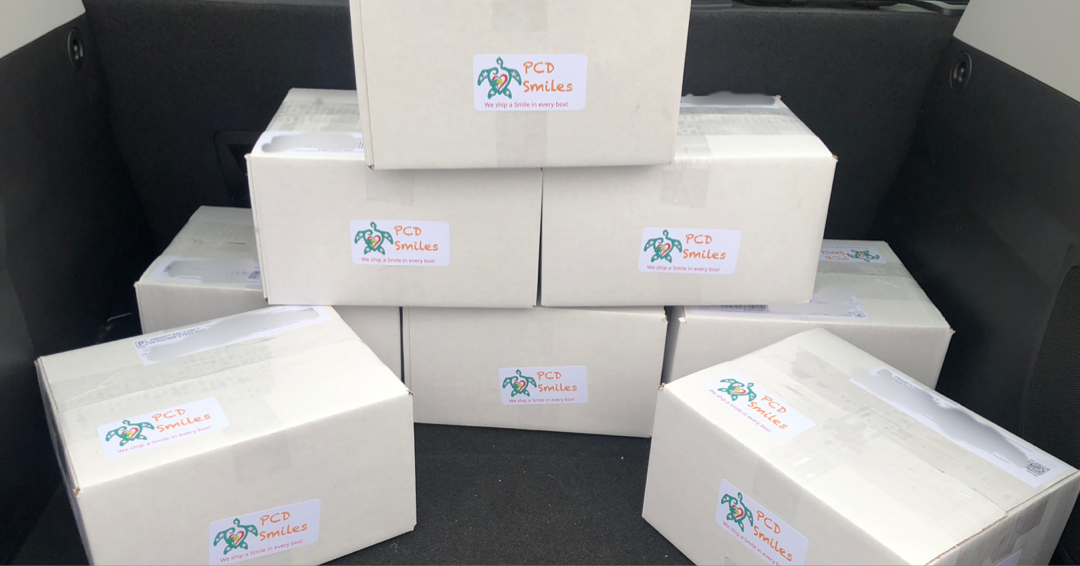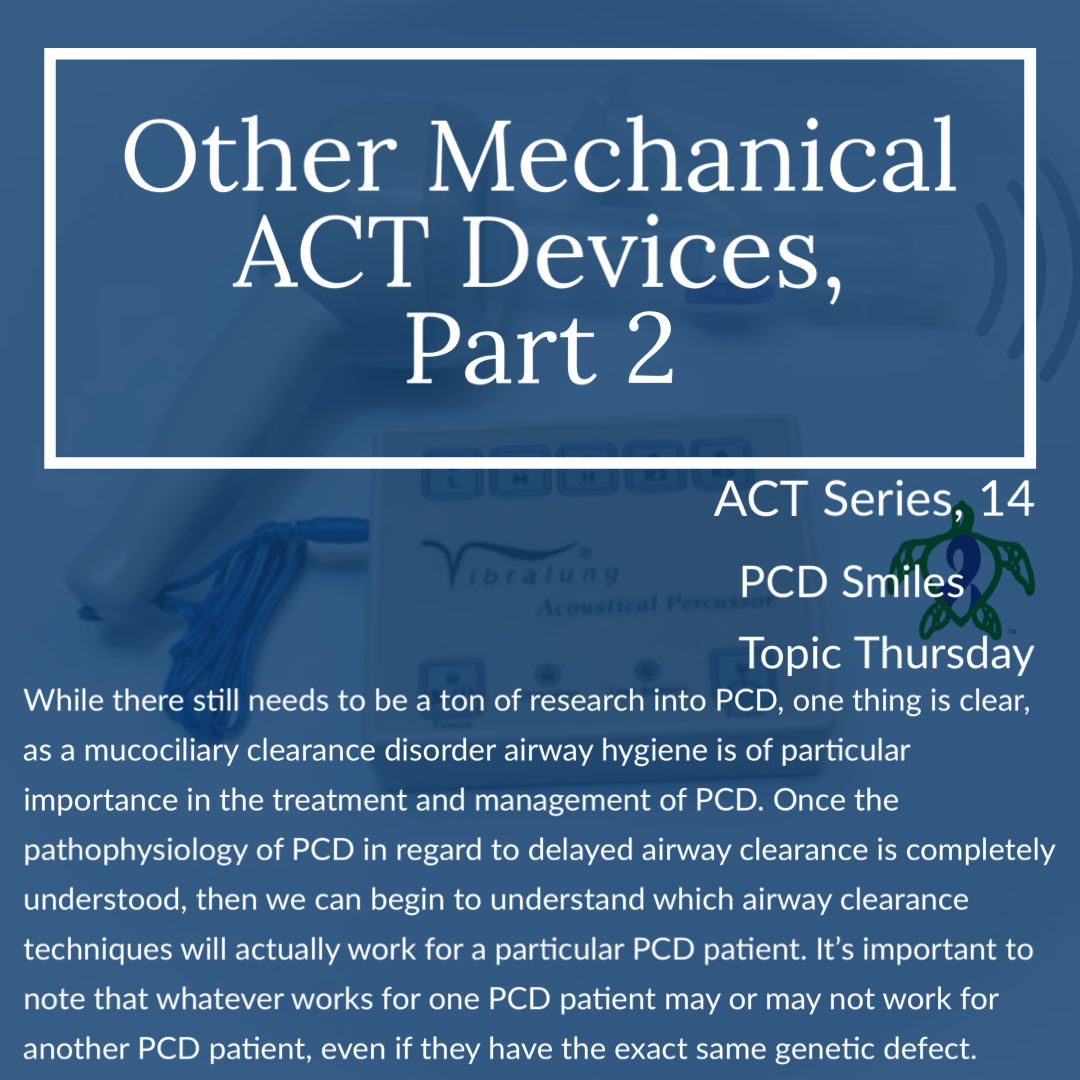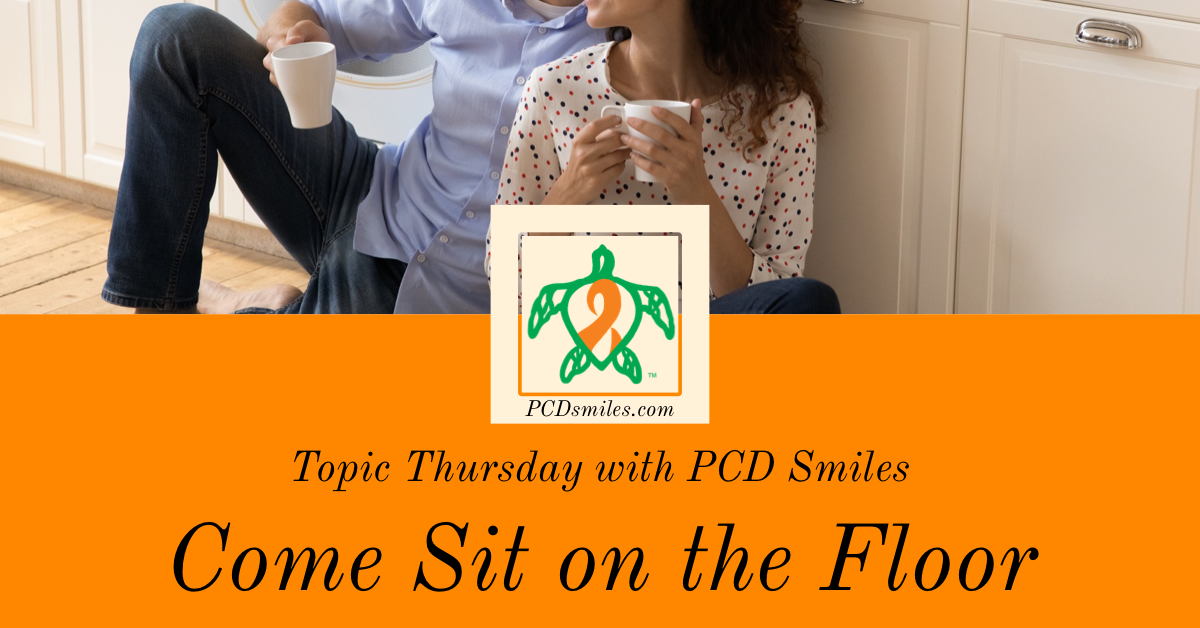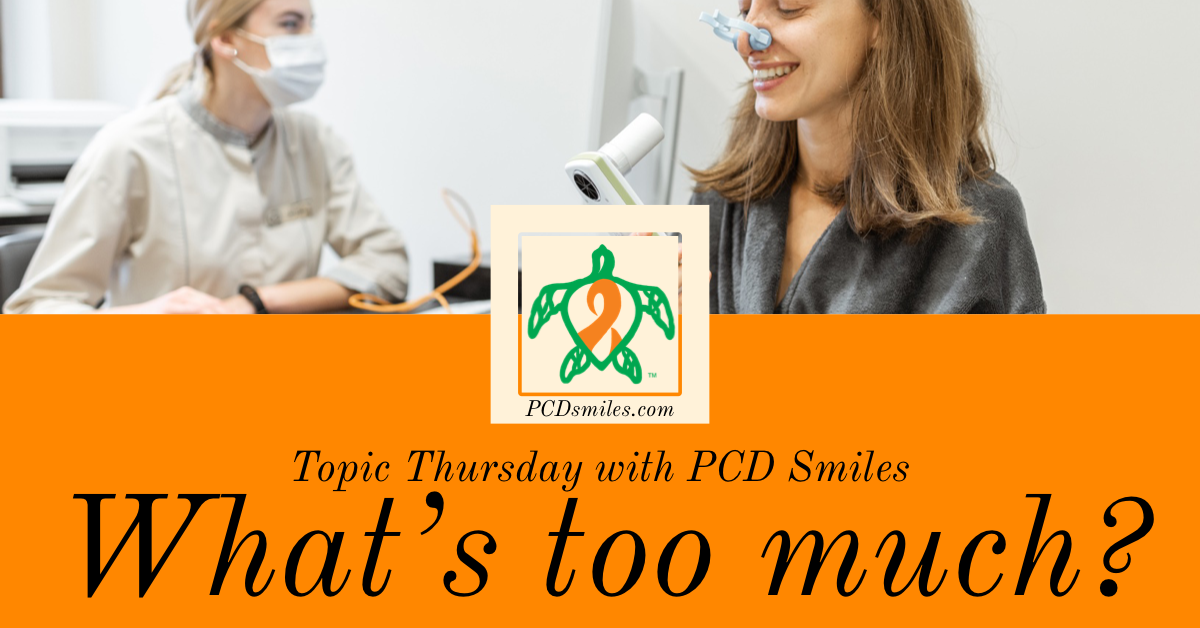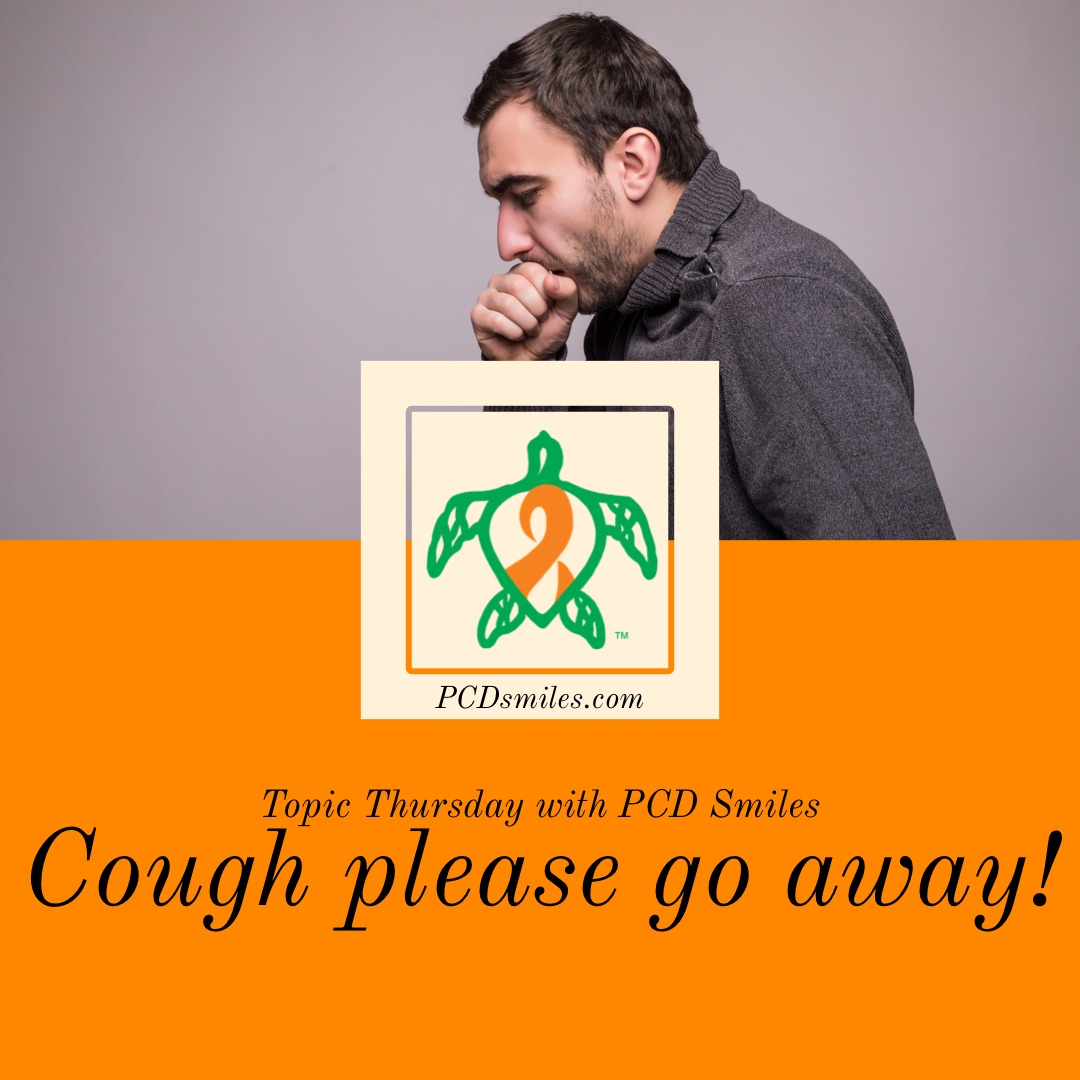As we near the end of our airway clearance technique (ACT) series there are a few other mechanical ACT device outliers left to discuss. In a social media age the resurgence of holistic practices have come full circle once again, as has the age of invention. Then add in recent awareness campaigns for rare diseases and there is a ton of focus helping those who have no help or treatments. The awareness campaigns for diseases like primary ciliary dyskinesia (PCD) have succeeded in bringing together not only the patient population, but clinicians and researchers a like. While there still needs to be a ton of research into PCD, one thing is clear, as a mucociliary clearance disorder airway hygiene is of particular importance in the treatment and management of PCD. Once the pathophysiology of PCD in regard to delayed airway clearance is completely understood, then we can begin to understand which airway clearance techniques will actually work for a particular PCD patient. It’s important to note that whatever works for one PCD patient may or may not work for another PCD patient, even if they have the exact same genetic defect. In “Part 2” we will look at the Lung Flute, the Vibralung Acoustical Percussor, the Revitive Aerosure, & cough assist devices.
The Lung Flute is another spin on a positive expiratory pressure (PEP) device with a slight twist. The Lung Flute operates under the premise of using sound waves to move mucus along the airways to be coughed out. The lung flute is a tubular devices with Mylar reed attached to a mouthpiece. The reed is angular and flared from the mouthpiece outward inside the tube. During the expiratory phase of breathing the reed oscillates to help move airway secretions by targeting the cilia to assist cilia by increasing their movements. It’s unclear to date if airway clearance techniques that augment cilia and or target cilia are actually beneficial to patients with primary ciliary dyskinesia who's cilia are broken at the cellular level and therefore do not function correctly. For more information on the Lung Flute ask your clinic’s licensed respiratory therapist, your clinic’s contracted licensed respiratory therapy provider at your next visit.
The Vibralung Acoustical Percussor in another spin on intrapulmonary percussive ventilation (IPV), more accurately the category of intrapulmonary percussive ventilation using acoustics. The Vibralung Acoustical Percussor operates under the premise of delivering sound waves during both the inspiratory and expiratory phases of normal breathing while providing PEP during the expiratory phase will move mucus from the smaller airways to the larger airways to be coughed out. The random acoustics help to soothe and calm inflamed airways while the airway secretions are moving and prevent airway collapse by utilizing PEP on the expiratory phase. It’s unclear if the Vibralung Acoustical Percussor targets ventilation or the cilia as it’s a relatively unstudied ACT. There is a small limited study evidence that suggests that the Vibralung Acoustical Percussor and the Vest Airway Clearance System® are equally beneficial to cystic fibrosis (CF) patients. The one drawback to the Vibralung Acoustical Percussor is that patients with excessive airway secretions, bronchoconstriction, and acute exacerbation of symptoms should exercise extreme caution when using the Vibralung, in fact it’s suggested that in these instances that the patient chose another ACT from their ACT plan. For more information on the Vibralung Acoustical Percussor ask your clinic’s licensed respiratory therapist, your clinic’s contracted licensed respiratory therapy provider at your next visit.
The Revitive Aerosure developed in the United Kingdom is a dual action lung therapy device. The Revitive Aerosure offers targeted lung muscle training and strengthening in it’s “Breathe Easier™ Mode”. And the Aerosure offers airway secretion mobilization in it’s “Lung Relief Mode”. The Aerosure operates under the premise of under normal breathing through a mouthpiece that triggers an oscillating valve to activate creating resistance and oscillation to the airways to move mucus. This is considered a passive airway clearance device by European Union (EU) regulators. As a relatively new ACT device it’s unclear which, if any ACT category the Aerosure is classified as. As of date of this publication, the Aerosure is not licensed for sale in the United States. For more information on the Revitive Aerosure, outside of the United States; ask your clinic’s licensed respiratory therapist, your clinic’s contracted licensed respiratory therapy provider at your next visit.
Cough assist machine use, although not considered an ACT device, is controversial in PCD care. But perhaps they shouldn’t be due to new research in cough clearance in PCD patients. It has long been thought that cough assist machine use in PCD care was not warranted because PCD patients retained their ability to cough. And that cough reflexes were in no way affected or diminished in the airways of a person with PCD. Though this theory was debunked just within the last decade. Recent research has shown that cough clearance in a person with PCD is severely impaired. This new research has put new focus on the use of cough assist machines in PCD care. Caution should be exercised when it comes to improperly administering cough assist machines to patients, because improper use can actually damage the patient’s mucociliary escalator and damage the patient’s cilia. This can mask other health disorders under the guise of being PCD when it is in fact not PCD. Great care should be considered when deciding to add a cough assist machine to a person with PCD’s ACT plan. For more information on cough assist machines ask your clinic’s licensed respiratory therapist, your clinic’s contracted licensed respiratory therapy provider at your next visit.
While airway clearance techniques are widely used throughout the world; the physiological mechanisms and consequences of airway clearance techniques are mostly misunderstood in the context of the diseases that the airway clearance techniques are prescribed for. There are many considerations for cough assist machines. Having medical professionals that are adequately trained on the specifics of airway clearance therapy, including cough assist; is a must for patient safety, including but not limited to the prescribing physician. Airway clearance techniques are intended to remove mucus from the peripheral airways to the central airways where the mucus can coughed out by the patient in a safe manner. The process of moving the mucus along the airways to be coughed out can last for several minutes after the treatment or rather ACT session has ended. Patients can expect to have increased voluntary and involuntary airway clearance, sometimes for several hours after the ACT session has ended. ACTs provide temporary increase in mucociliary clearance, which is why multiple ACT sessions are needed daily to be effective at helping maintain pulmonary hygiene or rather effective airway clearance. We hope that you join us next week for part fifteen of our series on airway clearance techniques.
Be sure to join us next week for another Topic Thursday.
Join our Facebook group Turtle Talk Café today.
We have several ways that you can donate to PCD Smiles;
- Visit Smile E. Turtle's Amazon Wishlist
- For more information on how you can donate, please visit our "Donation" page to check out our "Do & Don't policies.
- Or sponsor a PCD Smiles cheer package today!
- To shop for your “Official” turtle care ribbon gear today, visit PCD Style or Smile E. Cove
Thank you for your consideration!
***Please speak to your respiratory therapist or your PCD medical team before commencing any new treatment. DO NOT start using a device, or technique, on this website if you have not discussed this with your PCD team first.***

